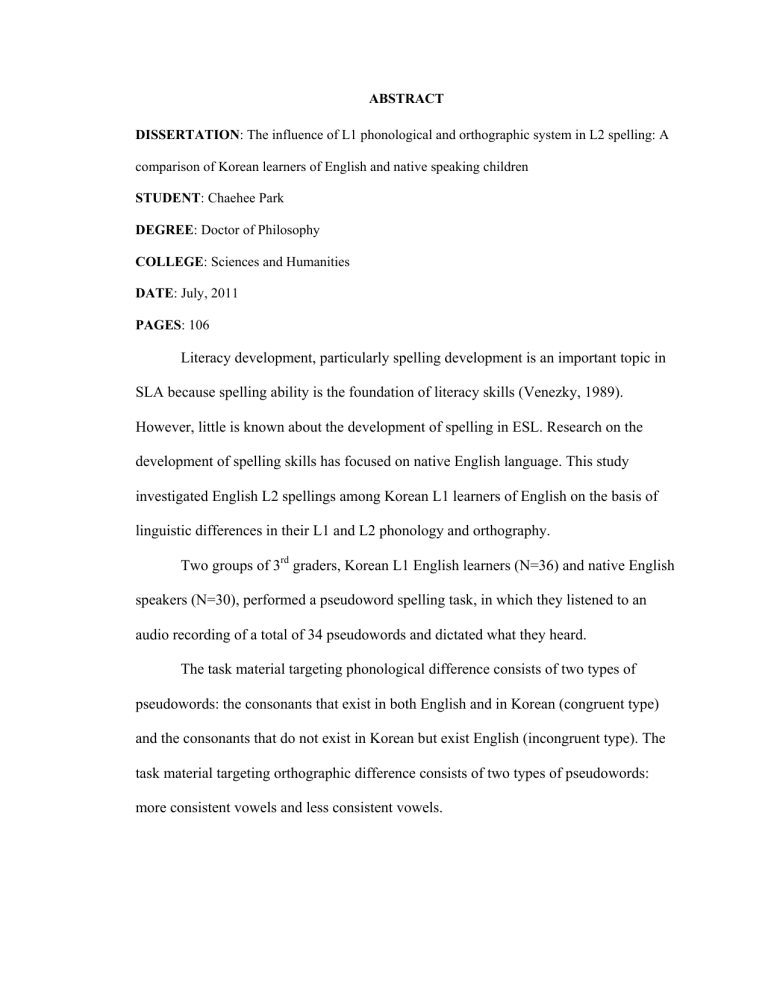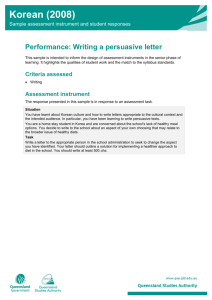Literacy development, particularly spelling development is an important topic in

ABSTRACT
DISSERTATION : The influence of L1 phonological and orthographic system in L2 spelling: A comparison of Korean learners of English and native speaking children
STUDENT : Chaehee Park
DEGREE : Doctor of Philosophy
COLLEGE : Sciences and Humanities
DATE : July, 2011
PAGES : 106
Literacy development, particularly spelling development is an important topic in
SLA because spelling ability is the foundation of literacy skills (Venezky, 1989).
However, little is known about the development of spelling in ESL. Research on the development of spelling skills has focused on native English language. This study investigated English L2 spellings among Korean L1 learners of English on the basis of linguistic differences in their L1 and L2 phonology and orthography.
Two groups of 3 rd
graders, Korean L1 English learners (N=36) and native English speakers (N=30), performed a pseudoword spelling task, in which they listened to an audio recording of a total of 34 pseudowords and dictated what they heard.
The task material targeting phonological difference consists of two types of pseudowords: the consonants that exist in both English and in Korean (congruent type) and the consonants that do not exist in Korean but exist English (incongruent type). The task material targeting orthographic difference consists of two types of pseudowords: more consistent vowels and less consistent vowels.
Data were tested with an experiment with a 2 x 2 factorial design with “group” and “word type” as independent variables. The groups included two groups who are from contrasting L1 backgrounds: English and Korean. For phonological difference, word type included two contrasting types: congruent and incongruent. For orthographic difference, word type included two contrasting types: more consistent and less consistent.
The results support the prediction that Korean L1 learners of English would have difficulty in spelling pseudowords containing phonemes which do not exist in Korean but are present in English phonology and that learners whose L1 is relatively transparent had difficulty in spelling L2 words whose grapheme phoneme correspondence is less transparent. Further analysis on error types and pedagogical implications regarding
English L2 spellings are addressed.






